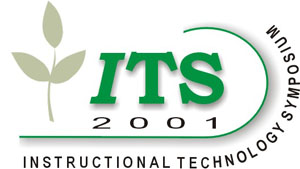West Virginia University has had an online presence for tree fruit disease and insect information at the Kearneysville Tree Fruit Research and Education Center (KTFREC) since November, 1996. The web site is a cooperative effort, with instructional materials and photographs provided by tree fruit pathologists from Maryland, Michigan, New York, North Carolina, Ohio, Pennsylvania, Virginia, and West Virginia (see credits). Disease information is presented in a variety of ways, including a diagnostic key with links to illustrations of descriptors, an alphabetical listing with links to pathogen and disease photographs and disease cycles, and "visual thumbnail galleries" where users may quickly view many small disease images arranged by plant organ. Disease fact sheets are available in html and pdf formats. Facts sheets have links to disease control strategies for both commercial orchardists and backyard fruit growers and, when they are available, listings of cultivar relative susceptibilities to pathogens are provided. In some situations, supplemental management information is available as PowerPoint slides or streaming video. Use statistics Analysis of server logs shows that site usage has increased significantly over the period July 1997 through September 2000 (most recent data available). The countries most frequently visiting were Canada, U.K., Australia, Germany, Netherlands, Italy, France, New Zealand, and Spain. The most popular item on the web site for disease information is the alphabetical listing, followed by the diagnostic key and the visual galleries (ranking 2nd, 3rd, and 4th respectively on the list of most requested pages). In the past 12 months, the most-viewed disease fact sheets were fire blight of apple and pear, apple scab, cedar-apple rust, powdery mildew of apple, and brown rot of peach and nectarine. The most popular downloaded item was the disease and insect management guide for home owners (authored by K. S. Yoder and D. G. Pfeiffer, Virginia Tech, and available as a pdf file and as html). The Ohio State University Organic Apple Disease Spray Guide (prepared by M. A. Ellis) was viewed 3,152 times and ranked 18th on the list of most requested pages. Teaching uses Information on teaching uses is gathered from a short form that course instructors are asked to submit when the web site is being used in the classroom. The KTFREC web site is used in a variety of settings for teaching, including associate degree, undergraduate and graduate level college and university courses in Introductory Biology, Environmental Biology, Economic Botany, Fruit Production, Sustainable Fruit and Vegetable Production, Biology of the Fungi, Horticultural Science, and Pomology. The teaching form has been submitted by users in the U.S.A., Chile, Germany, Italy, and Viet Nam. In Environmental Biology for non-majors, the instructor uses the web site in the classroom to illustrate with photographs the importance of diseases on food crops. In Biology of the Fungi, students are assigned web pages as references and are also used in class as the instructor describes the various fungal taxa. High quality images are critical in this setting. In Sustainable Fruit and Vegetable Production, the students have to design a fruit production business and anticipate production problems that they might encounter. Thus, they go to the web site to do background work on diseases and insects, debating about which are important in their state. Then the students spend time in class, after they have visited a few businesses, prioritizing the pests that drive control programs. Thus, in this example, the site is used primarily for information gathering. County extension agents in West Virginia and neighboring states use the site to print fact sheets for fruit-related inquiries. Extension agents that have not had previous experience in tree fruit have used the site to learn about diseases that they might encounter in their daily activities. Teaching uses are not limited to the typical classroom or extension setting. One individual used the site with her Cub Scout group to help children earn an agricultural activity pin. End
|
